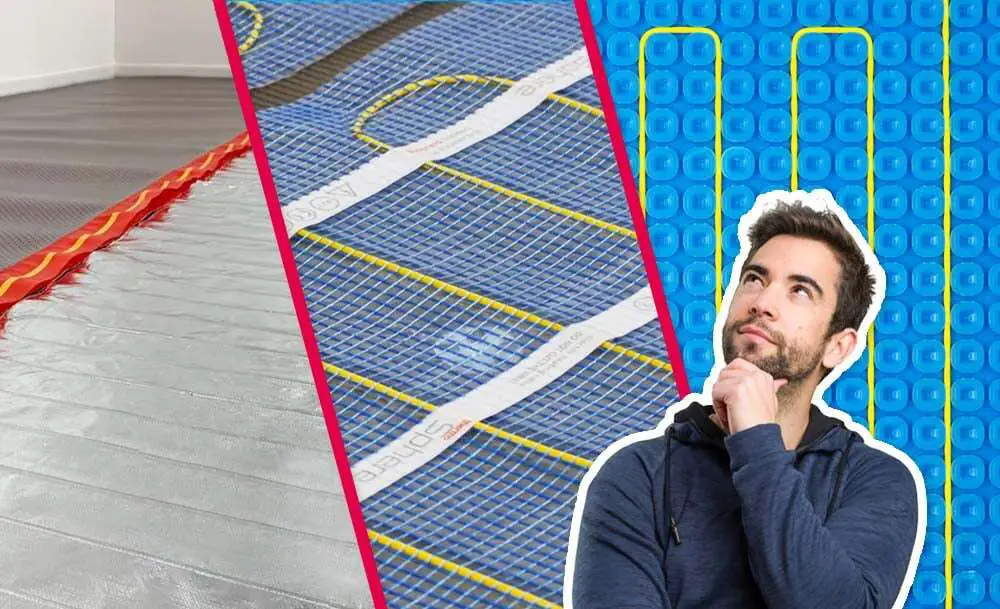11 min read
What’s the best electric underfloor heating system to use?
As a British manufacturer of electric underfloor heating, we often get asked ‘What’s the best electric underfloor heating system to use?’. Sounds...
6 min read
 Chris Hedges
:
Jul 4, 2023
Chris Hedges
:
Jul 4, 2023

When you ask a group of people if electric underfloor heating can be used as a primary heat source, more often than not you’ll get a mix of responses. Some say it can and others say it can’t.
If you want the simple answer, yes, electric underfloor heating can be used as a primary source of heat but there are several factors to consider ensuring running costs are kept to a minimum. In this heating blog, we outline some key considerations before you go full steam ahead and install electric underfloor heating for your primary source of heat. We will be covering:
For anyone looking to replace their home heating system or simply looking to upgrade their boiler, getting a heat loss calculation is well worth it. Best practice is to get a heat loss calculation because it ensures that the heating system that has been specified effectively and efficiently heats the space based on the heating demand. Lack of a heat loss calculation can often lead to either under or over specified systems being installed which can result in higher running costs and uncomfortable living spaces.
What is heat loss?
Heat loss occurs from hotter spaces to colder spaces and can happen via conduction, convection and radiation. In fact, it can happen using a combination of all three. When it is colder in the winter months, the rate in which heat is lost will increase, because of the higher temperature difference between inside your home and outside. If you have poor insulation, the rate of heat loss will be greater and the more expensive it will be to maintain your comfort levels (more on that later).
How heat loss is calculated
A heat loss calculation works out how quickly heat will escape out of the fabric of your home on the coldest day of the year, no matter if it’s from conduction; convection; or radiation.
The calculation for heat loss is:
q = (U x A) x Δt
Total heat loss = (Coefficient of heat transmission x Area) x difference in temperature between the inside and outside
Example of a heat loss calculation:
What is the heat loss from a building with a 50m2 area, a coefficient of 0.8 and a temperature difference of 22oC?
The answer: 880W
(0.8 x 50) x 22 = 880W
By running a heat loss calculation, you will know exactly the specification of the electric underfloor heating system that you need without compromising your comfort level.
Unfortunately, the UK has some of the worst insulated homes in western Europe. According to Northern Energy, around 35% of heat is lost due to poorly insulated walls and 10% of heat is lost via windows (Department for Business, Energy & Industrial Strategy).
No matter what heating system you are planning to install, hot air rises so another important part of insulating your home is to ensure you have adequate insulation in your loft. According to the Energy Saving Trust, a staggering 25% of heat is lost through the roof in a poorly insulated home.
As well as the above, heat can very easily be lost through the floor, which is why we always specify insulation boards with all electric underfloor heating systems. An uninsulated floor will cause 50% of the heat generated by the underfloor heating system to be lost through the substrate. This will cost you more to run because it will take twice as long for your room to reach your desired temperature. This is particularly important if you are planning to use electric underfloor heating as a primary source of heat as there will be larger heated spaces rather than just smaller bathrooms or kitchens.
If you plan to use electric underfloor heating as a primary heat source and you have a heat loss calculation, you will know what output of system you will need based on the heating demand of the building. The lower the heat loss the lower the output of the underfloor system you will need to maintain a perfect level of comfort. As an electric underfloor heating manufacturer, we can customise heating systems to meet the lower heating demand of a well-insulated home.
In addition to the right output specified, questions we would also ask include:
Type of project
Electric underfloor heating such as pre-spaced mesh mat, heating and decoupling membrane and foil systems are more commonly used in renovations. This is because there is little impact on floor height, and they have a faster installation time (depending on the size of the room).
However, it’s not solely used in renovation projects, it’s rising in popularity for new build projects too. For new build projects and where there is screed being laid, in-screed electric underfloor heating systems are popular because the heating cable can easily be installed in the screed layer during the building phase of the project. These systems are ideal for rooms that are in almost constant use (usually larger floor areas) as they have longer heat up and cool down times. They provide a great opportunity to take advantage of low-cost energy tariffs like Economy 7 because of the slower heat up and cool down time.

Type of subfloor
The reason why knowing the type of subfloor is important is to ensure the right insulation board is specified.
Type of floor finish
You will find that there are electric underfloor heating systems that have been specifically designed for different types of floor finish.
Restrictions on floor build-up
The heating component of electric underfloor heating systems only adds a minimal amount to the total height of the floor. Where floor height is impacted is in the installation process and what component parts are in the floor build-up itself. For example, the thickness of insulation board or adding a decoupling membrane to help protect tile or stone floor finishes will all impact the total height of the floor.
For more detailed information on floor build-ups, read ‘How thick is underfloor heating?’
When considering electric underfloor heating as a primary heat source, you need to be mindful of not exceeding the load of the building. For residential buildings this is usually between 60A and 100A. However, there are a couple of things you can consider:
Load management devices
A load management device helps to balance how much electricity is used at any one time. They are designed to reduce the peak demand and improve energy efficiency which will also help to keep energy bills from sky rocketing.
It is incredibly rare for a home that uses electric heating as its primary heat source to have all power-hungry appliances on at once. What could happen? Without a load management device, the main fuse could blow and will need to be replaced by a qualified electrician.
Zoning your heating
Electric heating works brilliantly if you plan to create heating zones. But what do we mean by ‘zoning’? By creating heating zones, you can control and set different temperatures for different spaces around your home. For example, you will probably want your lounge, where you may spend most of your time, to be a different temperature to that of a guest bedroom which would only be used infrequently. By creating heating zones, you minimise energy usage which will result in saving money off your energy bills.
Electric underfloor heating can be used as a primary source of heat for your home. With a heat loss calculation, it is possible to design a system that provides enough warmth to be a primary heat source. However, there are key considerations, especially for larger properties where the electrical load will need some sort of load management, but your electrician or heating engineer should be able to give you the right information you need to be sure.
If you are considering Solar PV or similar for your home too, electric underfloor heating can provide an alternative option for primary heating, especially as it unlocks more design freedom that radiators simply can’t.
If you have any questions about using electric underfloor heating as a primary source of heat or if you have questions regarding electric heat generally, please contact one of the ThermoSphere team who will be happy to help.

11 min read
As a British manufacturer of electric underfloor heating, we often get asked ‘What’s the best electric underfloor heating system to use?’. Sounds...

8 min read
If you are in the market for an electric underfloor heating system for your next home renovation, then you have landed in the perfect place. We’ve...

14 min read
So, you’ve completed your research on electric underfloor heating and have decided that it’s the perfect fit for your project. But, with so much...